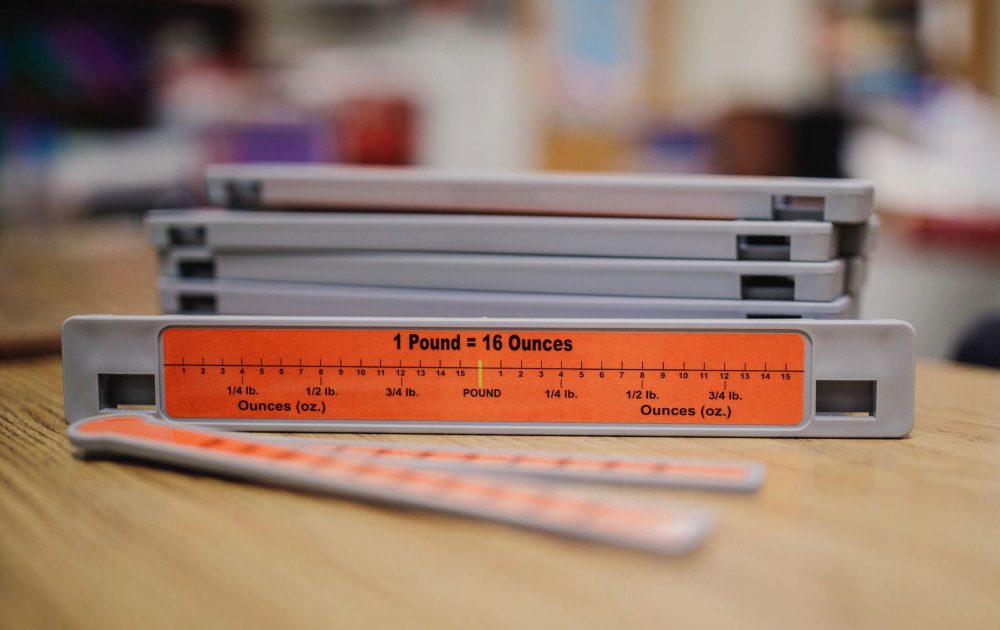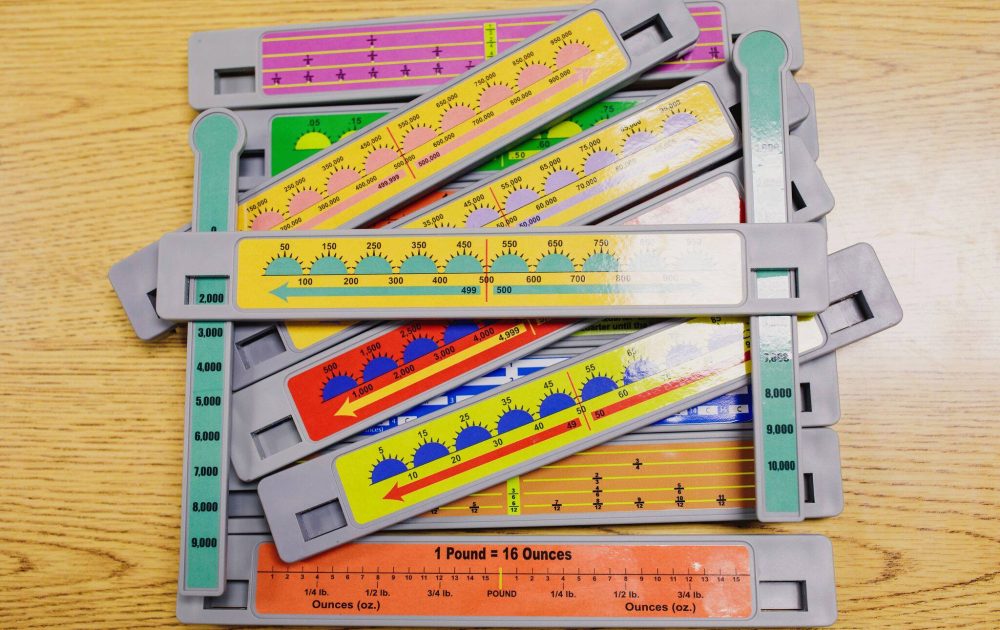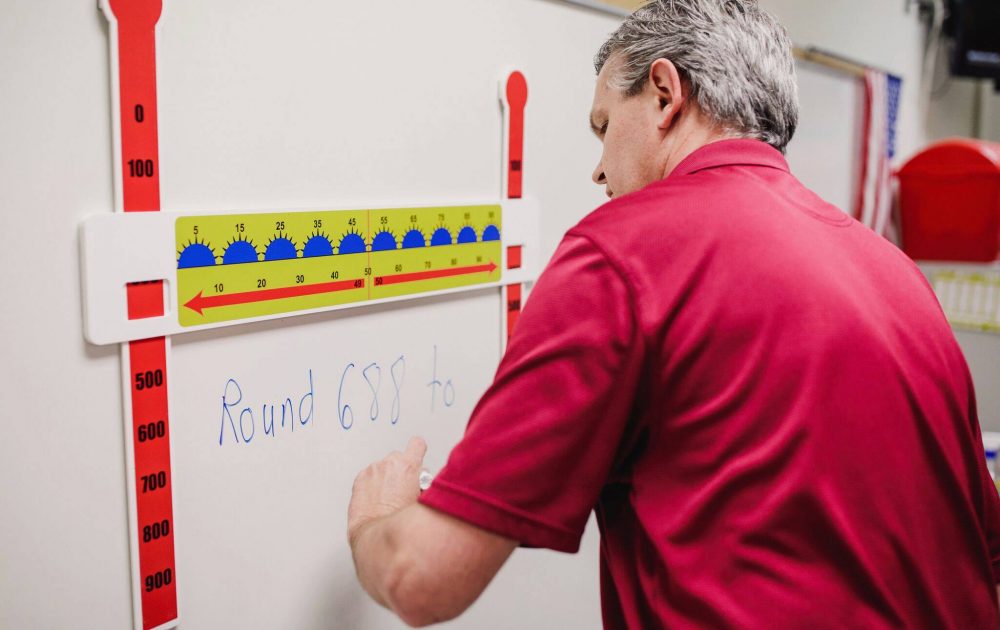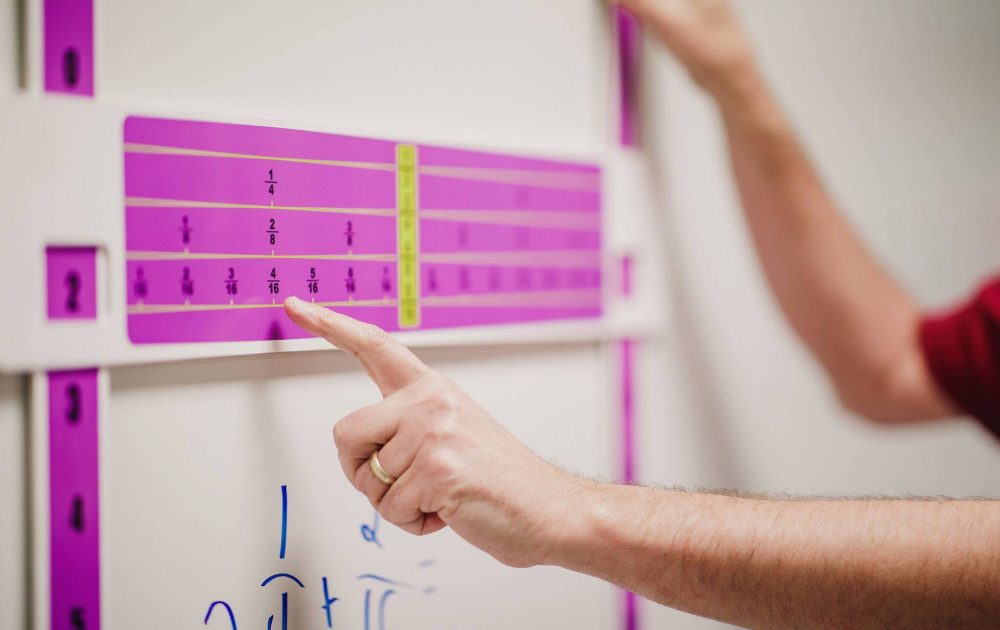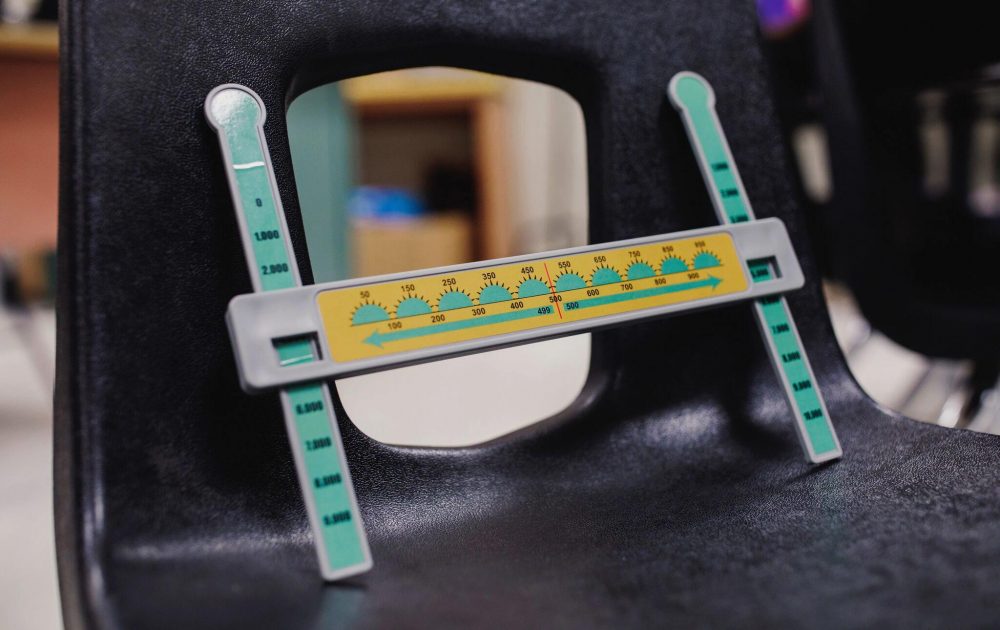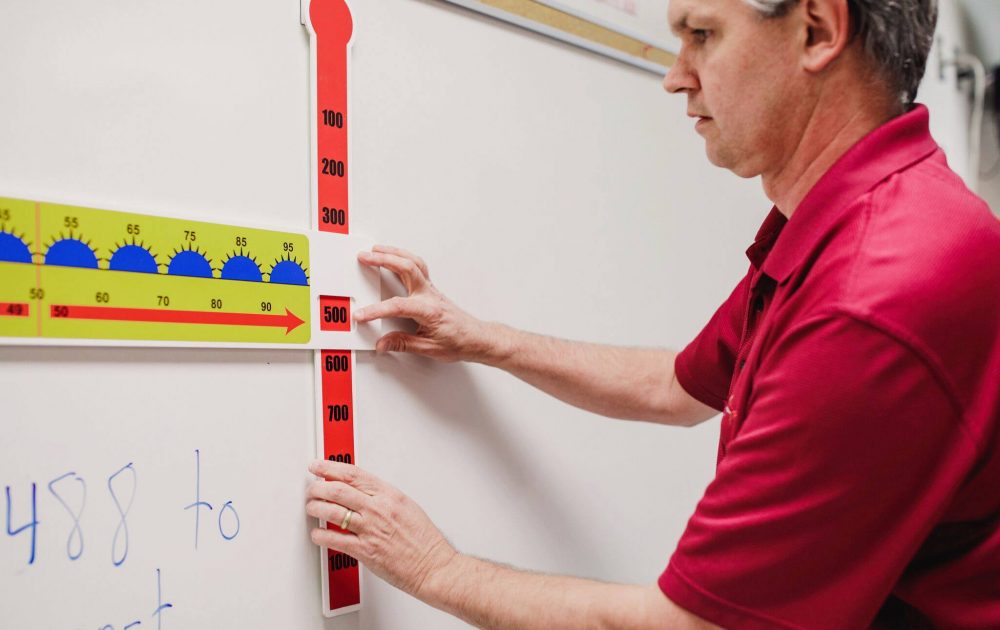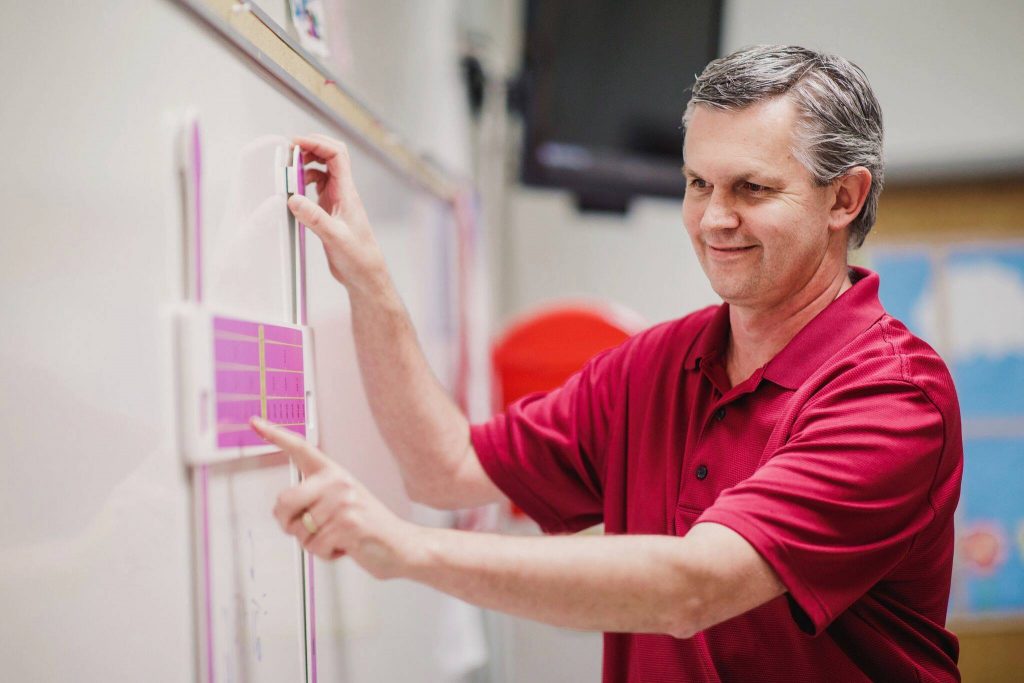
Photos by Rome City Schools
Outside-the-box instruction is something that most Rome City Schools teachers and administrators take advantage of when researching ways to help their students make the most of their educational years.
Jim Franklin, Inclusion Teacher at Elm Street Elementary School, is one of those outside-of-the-box instructors who has spent the past six years perfecting a tool that is helping students to be more proficient in math, especially those with special needs.
“About six years ago, I had an idea,” began Franklin. “At the time, I was working in a fourth-grade math inclusion classroom and we were working on rounding. I noticed how a lot of my students were struggling. So, I thought, ‘what is available for students to learn rounding?’
“There is a paper and pencil, a dry erase board, or a number line that is in most classrooms—but even that only goes up to 100 and we were learning numbers greater than 100. I knew that there had to be a better way,” he continued. “As I was walking along the hallway back to my room, the idea it hit me. That is when I began to develop the prototype of my Slide-A-Round Math Manipulatives.”
Franklin’s Slide-A-Round Math Manipulatives, “provides visual aids and a hands-on approach that increases students’ understanding and comprehension of place value, estimating and rounding of whole numbers and decimals, simplifying and comparing fractions, as well as addressing the standards of elapsed time and weight.”
By incorporating movable, interchangeable slides, Franklin created a number line system that can round whole numbers up to 10,000,000. It can also round numbers to the nearest tenth, hundredth, thousandth, ten thousandth, one hundred thousandth, and millionth.
“I took my prototype around to each teacher in first, second, third, fourth, fifth and sixth grade, and they loved it. I was so excited when the response was overwhelmingly positive,” said Franklin. “After I knew the prototype worked, I went home and took a for sale sign and chopped it up in order to make a better, sturdier version of my prototype.”
After continuing to perfect it, Franklin then employed his idea and let several of his students try it out.
“They gave me tips and pointers to make my prototype even better, and I would have never thought about those changes without them,” said Franklin. “From there, I sent my original prototype off to Montana and had a mold made.”
After Franklin had his mold in hand, he began traveling to different schools around the area to get other administrators input on his prototype. Teachers then began to ask him to help create manipulatives to address other mathematical standards. They gave him ideas to develop manipulatives that involve weight, elapsed time, decimals, money and fractions, etc.
“During this process, I have consulted with math teachers and specialists, administrators, parents and students from several different schools and school systems. I have also consulted with an occupational therapist, a hearing specialist and vision-impaired specialist,” he continued. “Of those stakeholders with whom I have worked throughout the initial part of the developmental process, I most value the student input. After all, they are the ones who will use these manipulatives as a vital part of their classroom instruction.”
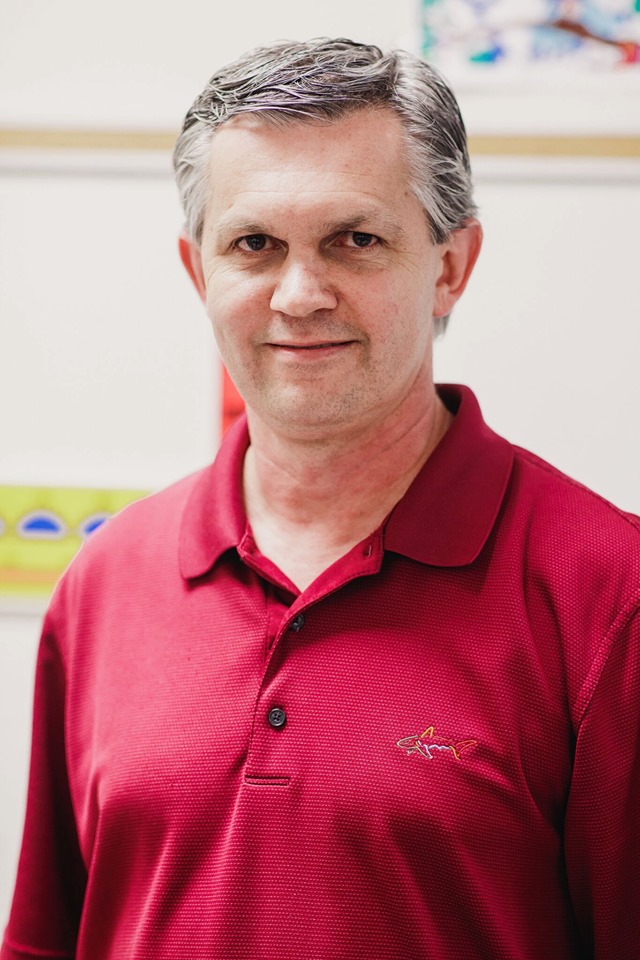
So, Franklin’s one small idea turned into something huge that has helped hundreds of thousands of students learn math. That’s a great feat for any teacher, and the discovery is especially great for students who are exposed to the tool every single day.
Franklin’s manipulatives are available in 11″, 24″ and 32″ sizes. Low vision and blind students can use the 24″ and 32″ sizes. The 32″ size, which has the magnets on the back, are also used for teachers’ aids.
Franklin and his Slide-A-Round Math Manipulatives were featured in the 2015 summer issue of the Council for Exceptional Children’s Visual Impairment and Deafblind Education Quarterly Journal. The article details Model High School’s resource teacher who is deaf and blind and uses Franklin’s braille manipulatives to teach life skills math, as well as how she works as a deafblind professional. “Her students use my regular student versions while she uses my braille versions,” said Franklin.
Franklin has also been published by the Canadian Deaf Blind Association (pages 6-7), as well as created a four-minute Easter Seals Indianapolis demonstration video that highlights his teaching strategies: http://www.eastersealstech.com/…/monday-tech-tip-math-mani…/
Just recently, Franklin traveled to Pensacola, Fla. to present his creation to the Florida Diagnostic and Learning Resource System, and in November this year, he will be traveling to the South Carolina Counsel of Teachers of Mathematics Conference.
“As long as there is one student who benefits from using this tool, I am going to keep on doing what I’m doing. That is why I developed this program; I wanted to better serve my students. I believe that this works; I use it with my own children and students,” smiled Franklin.
To learn more about Jim Franklin’s Slide Around Math Manipulatives, visit his website at: http://slidearoundmath.com
To check out Franklin’s article in the Council for Exceptional Children’s Visual Impairment and Deafblind Education Quarterly Journal (pages 9-26), visit this link: http://dvi.uberflip.com/i/548082-vidbe-quarterly-volume-60-3

